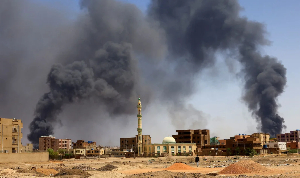The Ghana Growth & Development Platform (GGDP), a civil society organisation, has challenged Government over claims that the current power crisis is mainly due to the lack of generation capacity.
A statement which was issued on February 16, 2015 and signed by Theo Acheampong, Interim Vice-Chairman of GGDP, said the current round of power outage has nothing to do with the lack of generation capacity, but more to do with fuel availability – light cycle crude oil and natural gas to power the thermal plants as well as other causal factors.
It also said the signing of more power purchase contracts with Independent Power Producers (IPPs) to create an impression that the contracts will automatically resolve the power challenge was unhealthy.
According to the Energy Commission, installed generation capacity available for grid supply as at the end of 2013 was about 2,936 Megawatt (MW).
Hydro-electric generation at Akosombo, Bui and Kpong constituted 53.8 percent of this amount whereas thermal generation at the dual fuel natural gas, light cycle oil and diesel plants located in Tema and Takoradi (Aboadzi) provided 45.9 percent of installed capacity. Renewables constituted only 0.1 percent whereas LPG generation from Genser power provided the remaining 0.2 percent of installed capacity.
GGDP stated that demand has been estimated to increase by 10-15 percent year-on-year in the past three decades. Thus, new generation capacity must increase by at least the same percentage per year in order to support expanding industrial, institutional, commercial, household and other needs as the country grows and develops.
About 1,500 MW or 51% of the 2,936 MW installed capacity has been available in recent times due to a myriad of factors, the primary one being the unavailability of gas to power the thermal plants and government’s inability to purchase light cycle crude oil due to fiscal constraints.
This is compounded by the declining rainfall patterns which affect the hydro plants.
The Bui hydro plant, for example, has predominantly run at more than 40 percent of its installed 400MW capacity since it was commissioned with great fanfare in December 2013 due to the low water level.
“Thus, the dry season we are in currently has to end before rainfall can increase the water level to allow for a higher level of generation.”
Peak power demand in Ghana currently stands at about 2,000 MW. For 2014, Ghana’s peak load ranged between 1,900-2,200 MW (ex the 10-20% reserve margin needed for system redundancy).
Gross electricity supplied in 2013 was about 12,871 GWh (an average of 1,469 MW per day) against a forecast of 16,113 GWh (1,839 MW per day) for the year. Of the actual quantity supplied, hydro comprised only 936 MW (32% of the total installed capacity or 59% of hydro capacity) whereas thermal sources constituted 527 MW (18% of the total installed capacity or 39% of total thermal capacity). This condition created a 20% supply deficit in relation to forecast demand, it said.
The 2010 Wholesale Power Reliability Assessment report estimated that Ghana loses between 2-6 percent of GDP annually due to insufficient wholesale power supply, which excludes a number of indirect costs of lost economic output.
The main factors responsible for the current supply condition afore-stated are the very poor credit risk of ECG (currently the sole off-taker on the market), gas supply challenges from the West African gas pipeline, poor infrastructure planning and maintenance, lack of system redundancy resulting in many thermal plants going offline on or about similar times and distorted tariff regime that compels IPPs to ask for sovereign guarantees in Power Purchase Agreements (PPAs) before commencing operations.
The current low level of supply from the Bui Dam is a leading reason why the power outage has worsened since December 2014.
General News of Wednesday, 18 February 2015
Source: Daily Guide













